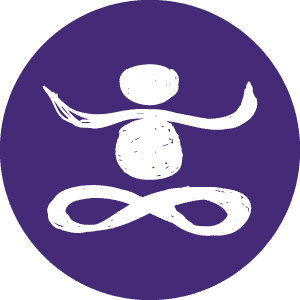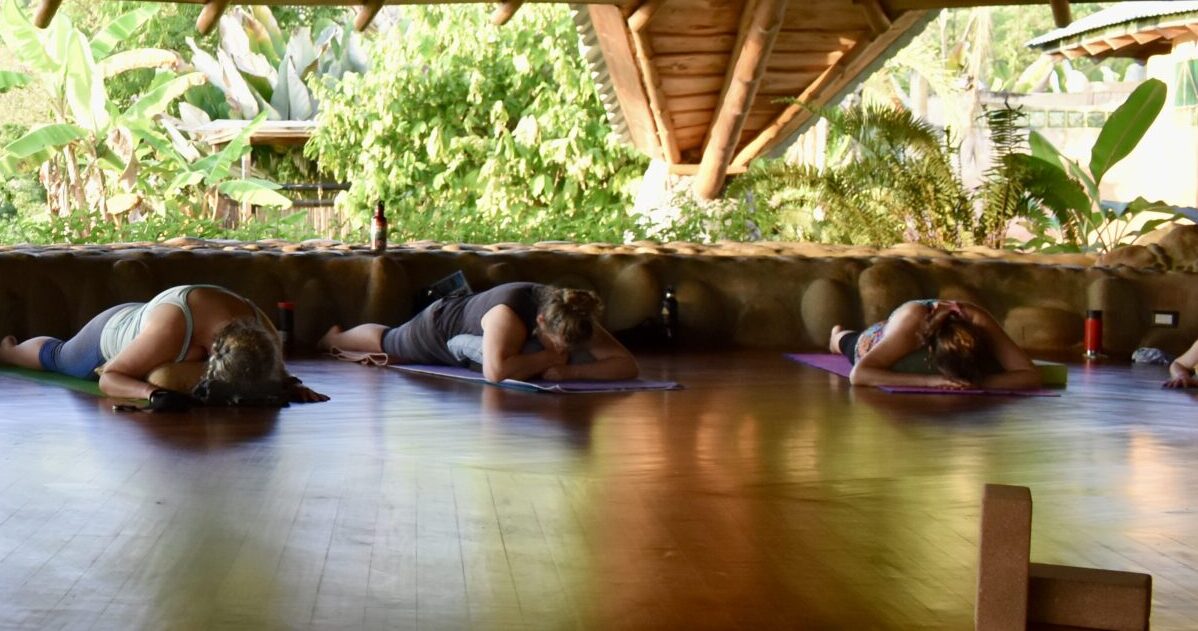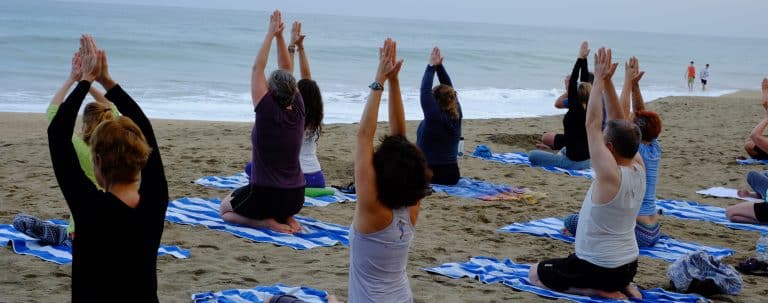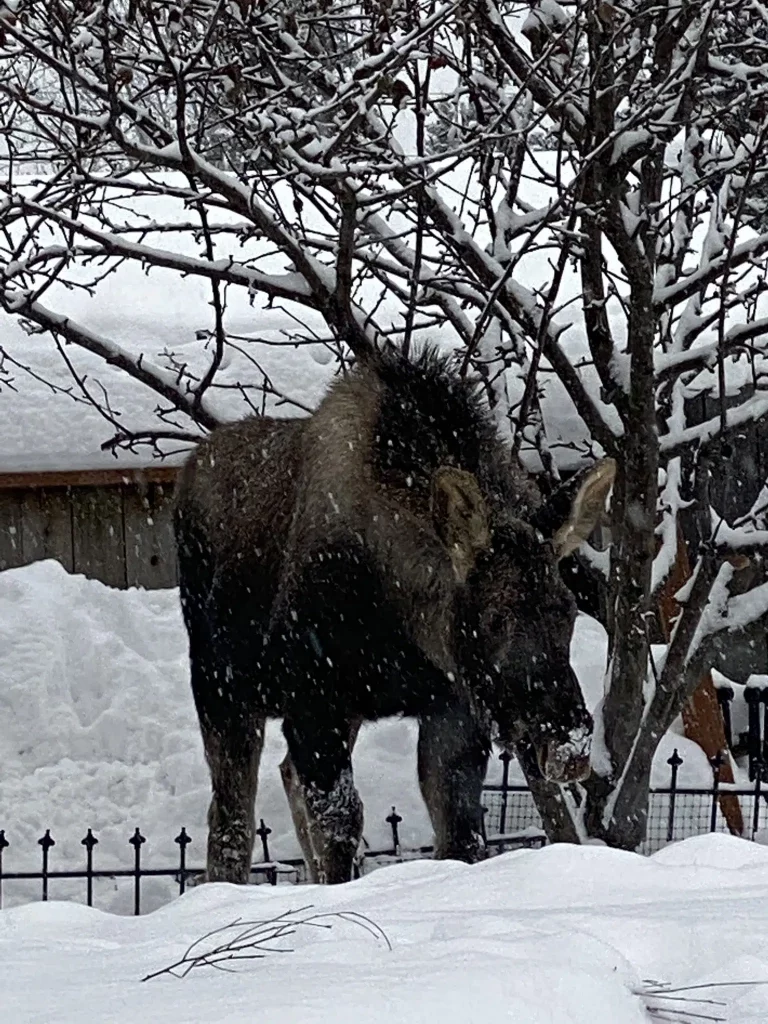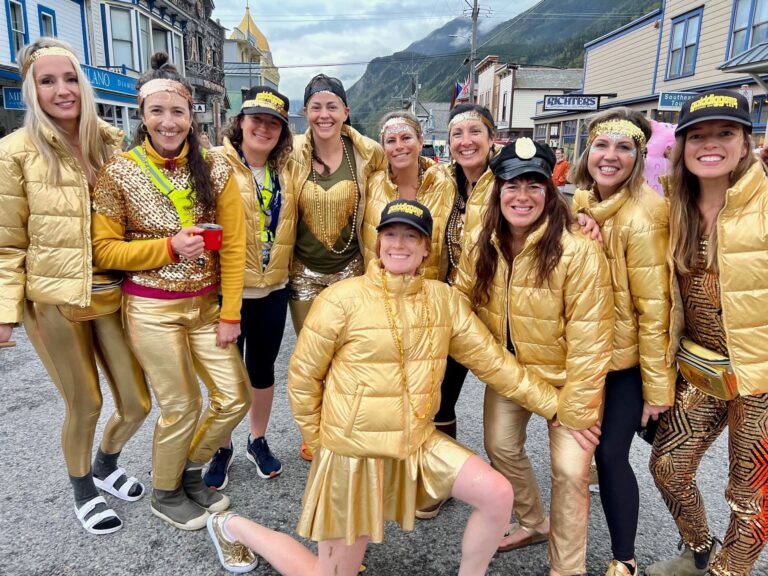Is this your status? Are you “retreat curious?”
I LOVE this curious feeling… granted, I’m biased… I’ve spent a lot of time training my brain to appreciate the discomfort, agitation even, that comes just at the brink of something new. It’s the feeling of potential, it’s the feeling of growth. It is energy coiling up into a spring that has the power to propel you forward. We can feel its vibration!
If you’re curious about retreat you might just start to pay more attention to how you feel when it comes up… does your mind get moving? Where does it go? Do you feel energy shifting in your chest or in your belly? It might feel like a flutter, a wave, or a fist depending on your constitution.
At Yoga for Mental Health we use the Foundations of Mindfulness as a guide to help us navigate the inevitable. Here, embodied, in the midst of life, we have bodies, minds, energy, roles and responsibilities to contend with… with practice we realize how they can support, not ambush our actualization (though sometimes it sure feels like it!)
I’m going to share answers to some frequently asked questions about retreats below. I’d like to invite you to pause after you read each question, maybe close your eyes, notice you’re breathing (and anything else about the way energy is moving in your mind and body) and then read the answer. To maximize the insight, repeat the mindfulness process after you read the answer.
What is it like to be on a retreat?
There are LOTS of different types of retreats out there. Some retreats focus on activities, fun, or food, some focus on meditation and/or yoga, some on spa / therapeutic treatments.
Retreats with Yoga for Mental Health are anchored around yoga, meditation, and mindfulness practices. This means that there are several times throughout the day where participants have the opportunity to come to the studio for guided practice. All levels of experience are welcome for both movement and meditation practices. Margi is an experienced retreat leader and yoga therapist. She prioritizes accessibility and “the right amount of intensity” to help students build confidence while learning new skills.
In between classes on Yoga for Mental Health retreats, there are delicious meals (included for everyone) and optional spa/therapeutic treatments and activities (usually for an additional cost.)
Being on a retreat is liking pushing the easy button. That doesn’t mean that EVERYTHING is easy. It means that it’s easier to focus on one thing… like your healing and / or growth. Someone else does the dishes.
Because our retreats at Yoga for Mental Health are structured around yoga and meditation classes, with optional activities and treatments, students can fine tune their schedule to be just as full, or open, as they like. We especially enjoy the unstructured time to linger after meals, to walk, read, write, draw, and take naps. To have time to spend both with ourselves and other interesting people is one of the greatest gifts of a retreat!
What does the cost include? Are there “retreat curious” options?
Each retreat is unique and you should review the details carefully to understand what is included in each one. Your registration fee is likely to cover yoga and meditation classes, administrative costs, and room and board (3 meals a day) at a host facility. Sometimes group activities, excursions, and transportation to the site are also included.
Sometimes, we are able to offer “non-yogi” rates. This covers administrative costs but not yoga and meditation classes. This can be a good option for a couple where only one person wants to attend classes. On all retreats, students have the option to attend as many (or as few) classes as they want. Your registration fee includes all classes and cannot be prorated.
For our next retreat to Chacala, Mexico you register with us at Yoga for Mental Health and then book (and pay for) your accommodations directly at the host site. While transportation to the site is not included in the price, we are happy to help organize group shuttles from the airport in Puerto Vallarta. Favorite activities on this retreat include: market visit, farm tour, and whale watching (we’ve even sat and watched them from the dining room!) Many participants like to take a daily walk down the beach to town (less than 1/2 a mile) for delicious homemade ice cream.
What type of yoga is this?
At Yoga for Mental Health we practice the eight limbs of yoga. They include: moral and behavioral principles, posture, breathing and mindfulness techniques, and concentration, meditation and absorption.
In yoga classes we focus on the posture, breathing and mindfulness techniques that together form what is called “hatha yoga.” Hatha is a word that signifies balance. We use directions of movement (up and down, forward and backward, to the right and to the left) as well as planes of movement (front and back, side to side, turning) to explore balance. We also consider energetic balance by moving more quickly sometimes and more slowly other times. We practice active and passive postures, activating and relaxing breathing techniques, and learn how to pay closer attention.
Margi’s formal training as a yoga teacher has been primarily with Iyengar trained teachers. The illustrious Lynne Minton, is her “yoga mom.” This style prioritizes the therapeutic benefits of careful alignment and often utilizes props to help bodies of all shapes and sizes to enjoy the freedom that is possible in every posture. Margi’s teaching style is also heavily influenced by her dance and meditation training, and, athletic pursuits. She has been a member of the International Association of Yoga Therapists for almost two decades.
What if I’m an introvert or get nervous in groups?
Yoga and meditation are wonderful “parallel play” opportunities! We get to enjoy being together while still doing our own thing. The emphasis in Margi’s classes is on a personal, not competitive or performative practice. Options are always offered so that students can find what works best for them.
Margi helps to facilitate introductions between participants so you’d don’t have to wade through the awkward part alone. Our retreat groups are ideally 8-12 participants, for bigger retreats we break the group down into smaller sections. These introductions, and the very nature of being on retreat together, can help make shuttles, meals, and activities easy to do alongside each other.
We hope that this gives you more of a feel of what moving closer to a retreat might be like… did you do the mindfulness exercises before and after each of the questions and answers? (It’s ok if you didn’t, this isn’t school, there’s no test.)
Please don’t hesitate to contact us if you have other questions that you’d like to see us answer in a future post. We hope we have piqued your curiosity about retreats and that you will join us! Visit our retreats page to see what’s coming up next.
